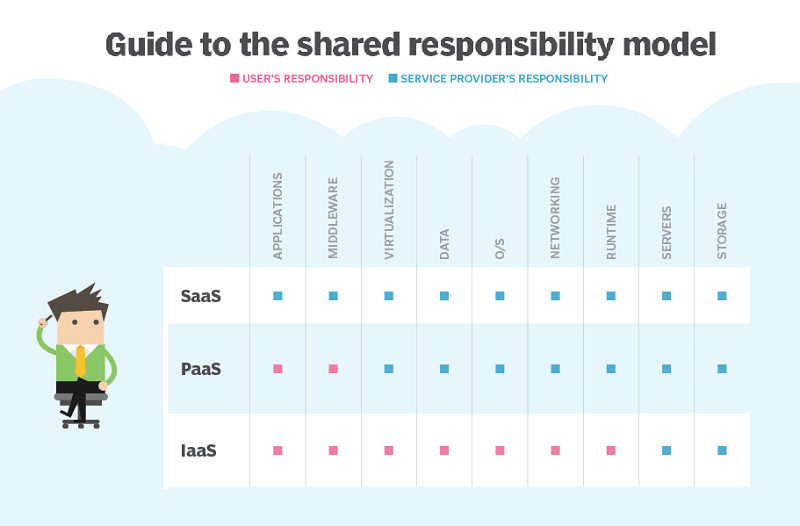The major public cloud vendors continue to invest in their services and improve cloud security, such as their ability to fend off distributed denial-of-service attacks. Some experts say that today's cloud attacks are far less devastating than on-premises ones because cloud attacks are generally limited to a single misconfigured service, whereas a local attack might devastate an entire infrastructure.
Nevertheless, IT shops must remain vigilant to guard against security threats. Cloud services provider do not take full responsibility to keep cloud data safe. Cloud users must understand their shared responsibility in the cloud to protect their data. Cloud security best practices include configuration management, automated security updates on SaaS, and improved logging and access management. Cloud configurations today are more standard, and standard configurations are easier to secure.
Security dashboards and trend analysis tools let enterprises look into their environment to help it stay secure. Cloud versions are far more flexible than the tools that live on premises. For example, an enterprise can activate a service provider's online dashboard and quickly receive visibility into an online attack.
Cloud security challenges
Cloud security breaches and incidents still occur even as security technologies improve and service providers gird their networks. People can attack network hosts and web apps as fast as they can be fortified. Cloud administrators should test their environments and have the latest security audits and reports. Take care when adopting new technologies, such as AI and machine learning, which use many data sources and therefore broaden the range for potential attacks.


